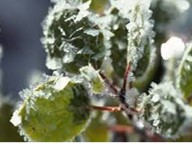Freezing tests
For the uninitiated it is recommended to read at least the chapter on Cold Stress under our The Stresses section.
The general approach to freezing tests is that sampled tissues or small plants are subjected to a freeze-thaw cycle after which the sample is tested for injury. The freeze-thaw cycle can be applied to cold-hardened plants or to non-hardened plants. It is the consensus that the ability for cold hardening is part of the genetic capacity for freezing tolerance. Thus, cold hardening treatment is applied either in the natural cold field environment or in a controlled growth chamber. The cold hardening temperature is off course above the lethal temperature for the specific plant materials. Each species requires its own effective temperature regime for cold hardening and for the freeze-thaw treatment. For accurate and repeatable freeze-thaw treatment it is recommended to invest in a programmable laboratory freezer. Check the literature for the hardening protocol used with the specific plant species.
Measuring injury after a freeze-thaw treatment has been a long standing issue investigated in crops, grasses, vegetables, trees and the various plant parts concerned. It can be conclude that apart from certain tests specific to certain species or conditions there are three generally acceptable and widely used tests:
1. Visual observation of the affected plant or plant part during treatment or upon recovery.
A selected example pertaining to visual estimate testing
2. Regrowth of the plant upon recovery to normal temperature.
See Plant growth measurement
3. Measurement of ion leakage from the affected tissue (see CMS test for heat tolerance)
Selected articles pertaining to the ion leakage test:
Item 1
Item 2
Item 3








